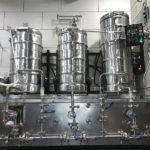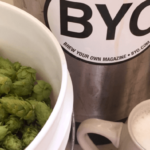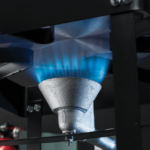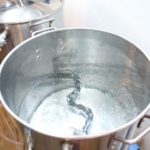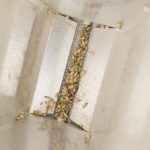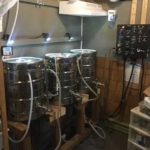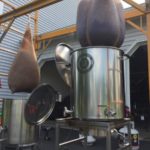Articles
Topic: Equipment
Setting Up a Homebrew Laboratory
Everyone has their own reasons for homebrewing. Some do it for the creativity, others to be able to drink something they can’t find in a store. Some enjoy making things themselves, or
Drool Page
Featuring some of the latest drool worthy features found in our Homebrew Nation section of BYO. Homebrew Drool Setup — JR Renna • Pen Argyl, Pennsylvania Many of us have fun names
Calibrate Your Brew System
To produce consistent beers and hit our targets from brew day to brew day you need to understand your brewing system and all of its variables. Once every facet of your brew day is calibrated, the guesswork will be minimalized.
Feeling the Pressure, Tips for Unitank Users
Mr. Wizard dives deep into the effects changing pressure can have on carbonation levels of beer. Also, a homebrewer is looking for advice on best-practices for the new unitank they recently purchased.
Homebrew Burner Comparison
There are a handful of features that differentiate popular homebrew burners on the market today. We’ve put the most popular burner options side-by-side, so you can compare each and decide which is best to meet your needs.
Bring the Heat
There are many factors to consider when deciding between propane, natural gas, and electricity as a heat source for your homebrew. John Blichmann walks us through those considerations, plus the pros and cons of each.
Stainless Steel Care: Tips From the Pros
Stainless steel may cost more than aluminum, but there are many reasons why it is used in both commercial breweries and homebreweries. If you’re investing in stainless, it means you should make sure you are treating it correctly. Learn from two professionals who know what it takes to properly care for stainless steel equipment.
Malt Mills
Grain mills all serve the same general purpose, but each rely on unique features and materials to get the job done. We compare 10 homebrew mills on the market so you can find the mill that best suits your needs.
Homebrew Drool Systems – Fully electric, bottom-drained, HERMS system
Joel Simard • Gatineau, Québec My brewing system is a fully electric bottom-drained, single-tier HERMS system. Both the hot liquor tank and the kettle are each fitted with a 5500 watt water
Big Batch BIAB
Think brew-in-a-bag (BIAB) is just for small stovetop brewdays? Think again. Here is the equipment and other considerations to brew mega BIAB batches.
Wort Chilling
Homebrewers need to chill there wort after the boil, but there is no correct way. Learn the pros and cons of various methods of wort chilling along with the different techniques to chill the wort down to yeast-pitching temperatures.
RIMS and HERMS
Because our batch sizes are typically small compared to commercial brews, one problem many all-grain homebrewers have is maintaining their mash temperature. Ideally, mash temperature should remain relatively constant throughout each rest.

